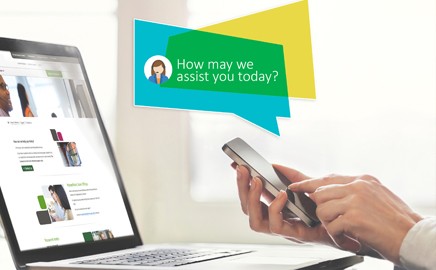The following is a guest blog written by Lori Marion, Director of Product Marketing, Helpshift. To learn more: Register for the Helpshift webinar, hosted by Execs In The Know.
Brand leaders are taking a deep look at the “end-to-end” shopper’s journey and changing consumer sentiment is at the root of it all. Digitally native customers have been empowered to get access to information and services, across devices, anytime, anywhere. The mix of an always-on mindset and mobile devices are reshaping expectations that each experience will be consistent no matter where they are in the journey, and particularly in interacting with customer service. Over 93% of consumers own a smartphone, and in this time of instant everything, customers also believe that every digital experience will be as familiar as Amazon, or Uber. This puts the pressure squarely on the shoulders of CX and Customer Service leaders to build a coordinated and seamless back-end experience that connects customers to service interactions that are as elegant as the purchasing experience. This has Customer Service and CX leaders asking the question, “Where do I start?”.
With more than 100-million bot interactions and customer learnings, here are a few areas that we think brands could benefit from our learnings when considering a solution for Customer Service automation:
-
1. Set the Stage. When building your strategy, focus on improvements that garner the biggest impact on customers and agents with the least disruption. Consider reviewing your goals and workflows early in the process. It’s recommended to conduct a workflow analysis in the initial stage to ensure legacy issues are identified and removed upfront. You should also develop a 60-day plan to outline how to measure success. These disciplines not only optimize your launch strategy but gives you the footing to ensure you reach your intended goals quickly.
-
2. Deliver Experiences Customers Want. Fundamentally, automation helps reduce channel cost, while enabling more efficient agent & customer interactions. But for brands that are customer-first, digital-first it’s also a way to help build on the brand’s equity. Self-help and unassisted learning with FAQs allow consumers to quickly find information on their terms. AI and bots allow consumers to interact with a brand across their preferred channels while simultaneously helping companies to personalize their experience. Customers assume that you know who they are, and what they’ve purchased. When searching for a solution, consider one that gives you flexible and configurable ways to grow with a mix of AI, Bots and Humans. Look for fast results without the need for large amounts of training data or expansive teams to integrate and deploy.
-
3. Understand the Difference. Getting started begins with rethinking the ways to deliver Digital Customer Service. As you consider your goals, include time to deployment. How quickly can you recoup investment cost with a solution that is built for scale? When selecting a provider for Digital Customer Service, make this a part of your decision-making process:
-
Digital Engagement: Breadth and depth of digital engagement channel support such as phone, email management, messaging, and conversational interfaces for connected customer experiences.
-
Asynchronous Messaging: Enables customers to engage, disengage and re-engage in a conversation with a brand at their time and provides a full history of all their communication in a single conversational thread. Agents and customers will have the freedom to move between bot, messaging and phone interactions at the user’s choosing.
-
Automation of Engagement: Enables enriched digital customer service functionality with AI techniques like machine learning, natural language processing, and chatbots
-
Knowledge Management Support: Knowledgebase, search technology, front & back-end UI that allows enterprise and third-party integrations
-
Open Platform: Seamless workflow orchestration and integration within the platform, channels, third-party and functionality such as channel routing.
-
Continuous Intelligence: Real-time analytics and processing of current and historical data to prescribe actions in response to business moments and other events. It provides decision support and leverages technologies such as augmented analytics, event stream processing, and machine learning.
-
Agent Desktop Unification: A single view of the entire conversation history across channels, integrations and management tools like your CRM, inventory, BI and analytics.
For more on how to put your plans in motion, go to the Ultimate Guide to Digital-First Customer Service and listen in to the replay of the webinar, Connected Customer Conversations In a Mobile-First World.




























































 TELUS Digital
TELUS Digital ibex delivers innovative BPO, smart digital marketing, online acquisition technology, and end-to-end customer engagement solutions to help companies acquire, engage and retain customers. ibex leverages its diverse global team and industry-leading technology, including its AI-powered ibex Wave iX solutions suite, to drive superior CX for top brands across retail, e-commerce, healthcare, fintech, utilities and logistics.
ibex delivers innovative BPO, smart digital marketing, online acquisition technology, and end-to-end customer engagement solutions to help companies acquire, engage and retain customers. ibex leverages its diverse global team and industry-leading technology, including its AI-powered ibex Wave iX solutions suite, to drive superior CX for top brands across retail, e-commerce, healthcare, fintech, utilities and logistics.






















 Trista Miller
Trista Miller




























